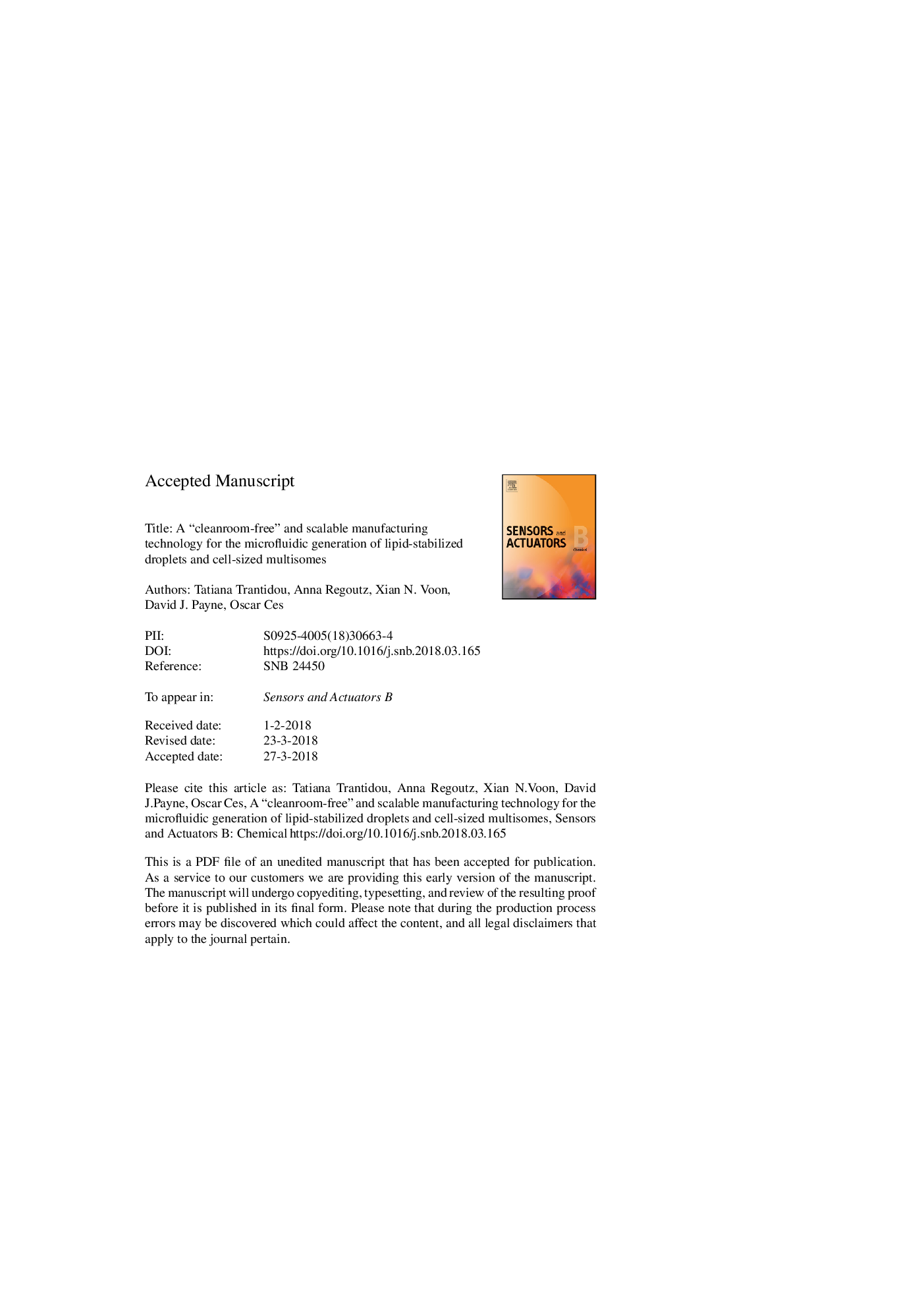| Article ID | Journal | Published Year | Pages | File Type |
|---|---|---|---|---|
| 7139666 | Sensors and Actuators B: Chemical | 2018 | 20 Pages |
Abstract
There is a growing demand to construct artificial biomimetic structures from the bottom-up using simple chemical components in a controlled and high-throughput way. These cell mimics are encapsulated by lipid membranes and can reconstitute biological machinery within them. To date, such synthetic cells based upon droplet microfluidics are fabricated using non-scalable, expensive and time-consuming strategies, and are thus restricted to small-scale in-house manufacturing. Here, we report a “cleanroom-free” and highly scalable microfluidic manufacturing technology based on dry film resists and multilayer lamination. The technology facilitates the controlled and high-throughput generation of stable and monodisperse droplets using anionic surfactants and more biologically relevant phospholipids. We demonstrate the versatility of this approach by selectively patterning the surface chemistry of the device, enabling the production of compartmentalized lipid structures based on droplet interface bilayers (multisomes). This technology has the potential to simultaneously unlock the widespread exploitation of microfluidics to chemists and synthetic biologists not having access to controlled production environments and facilitate low-cost (<â¯Â£1) high-volume fabrication of self-contained disposable devices with minimum feature sizes of 30â¯Î¼m. The associated material and equipment costs approach those of other deskilled prototyping technologies, such as 3D printing that have made the transition into the mainstream.
Related Topics
Physical Sciences and Engineering
Chemistry
Analytical Chemistry
Authors
Tatiana Trantidou, Anna Regoutz, Xian N. Voon, David J. Payne, Oscar Ces,
